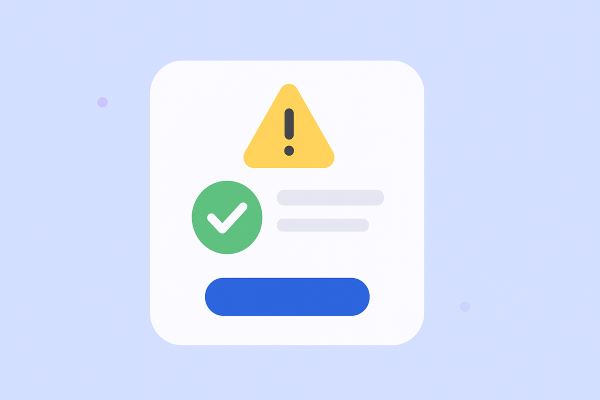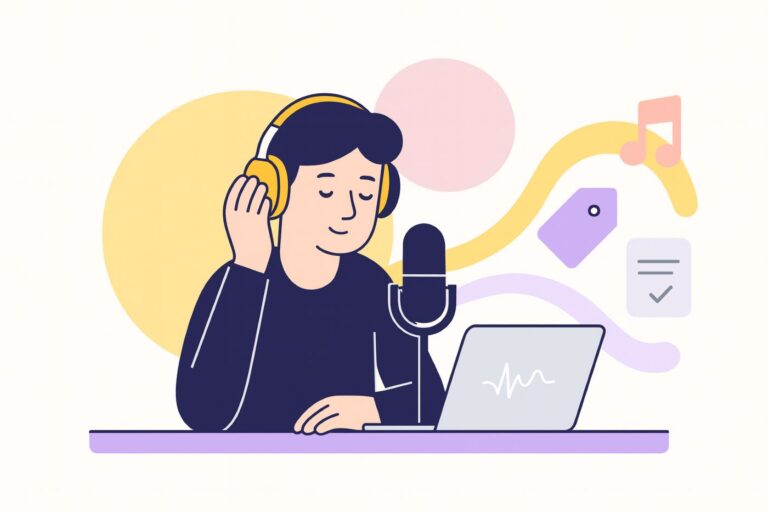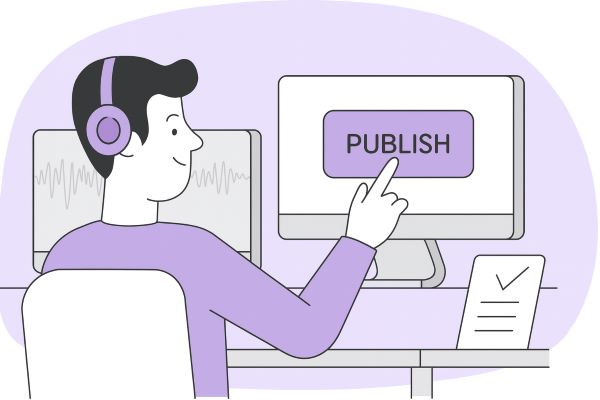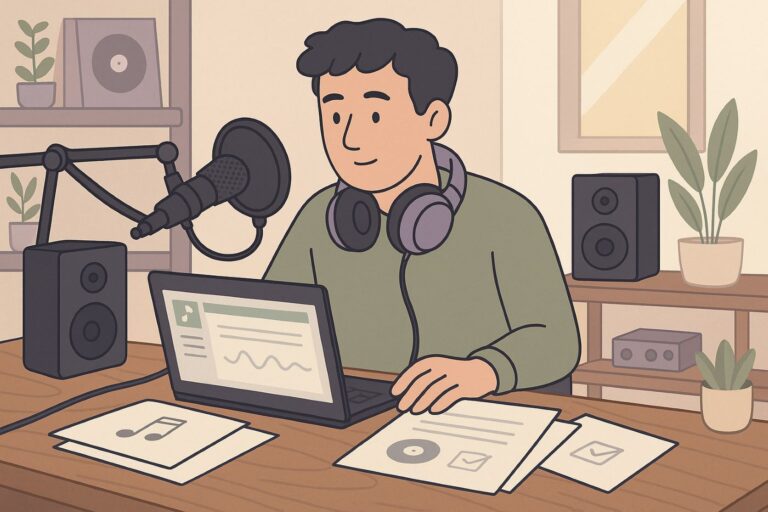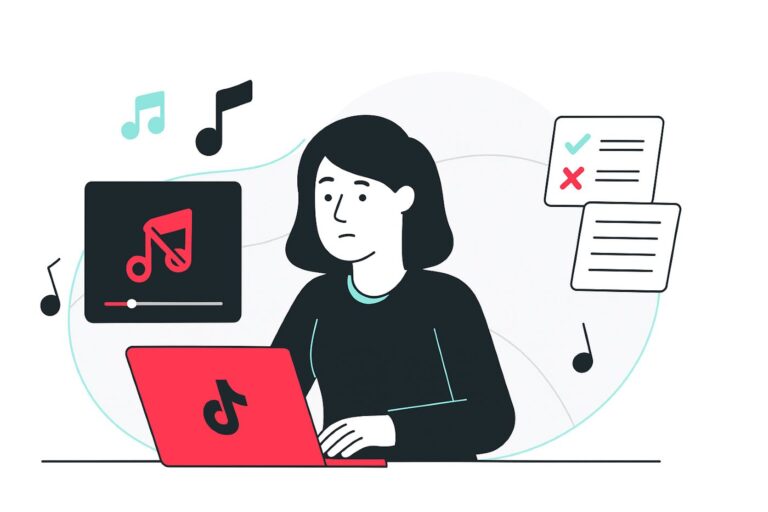How Does Music Licensing Work
Audiodrome is a royalty-free music platform designed specifically for content creators who need affordable, high-quality background music for videos, podcasts, social media, and commercial projects. Unlike subscription-only services, Audiodrome offers both free tracks and simple one-time licensing with full commercial rights, including DMCA-safe use on YouTube, Instagram, and TikTok. All music is original, professionally produced, and PRO-free, ensuring zero copyright claims. It’s ideal for YouTubers, freelancers, marketers, and anyone looking for budget-friendly audio that’s safe to monetize.
In plain terms, music licensing is the act of buying permission (not the music itself) so you can legally add someone else’s song or sound effect to your project. Every licence states who owns which parts of the track, how you may use it, and what you owe in return. Here’s how the moving pieces fit together.
Two Layers of Copyright Sit Behind Every Track
Every piece of recorded music carries two distinct copyrights. One protects the composition – that’s the melody, lyrics, and structure of the song. It belongs to the songwriter or their publisher, and it exists even before the song is ever recorded. Think of this as the sheet music version of a song: the idea and expression behind it.

The second copyright protects the sound recording – the actual performance you hear when you play a song. This version belongs to whoever financed or produced the recording, usually a record label or sometimes the performing artist. It’s the tangible version of the song that gets streamed, downloaded, or placed in a video.
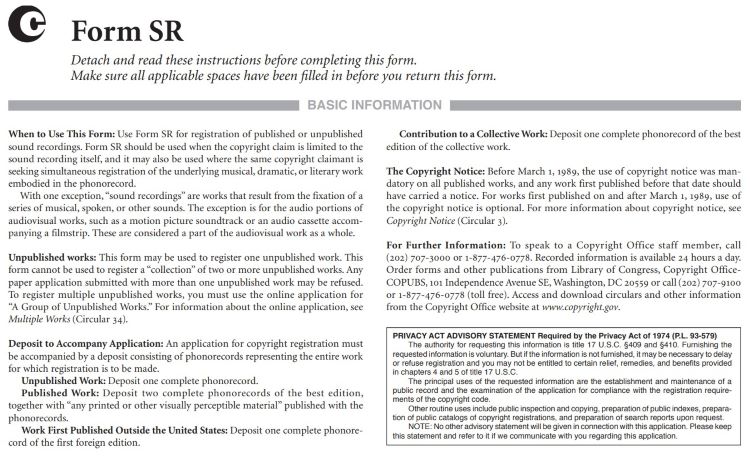
If you want to use a song in any project with visuals, like a short film, podcast intro, YouTube video, or TV ad, you’re creating a new, combined work. That’s called synchronization.
To use music legally in these situations, you need permission from both copyright holders. One gives you the rights to the song itself, and the other lets you use the recorded performance. Skip either one, and you risk takedowns, copyright claims, or even legal fines.
Core Rights You May Need to License
When you put music into any public-facing project (online, on air, or in a live space), you brush against four legal “switches.” Each switch belongs to a different party, so clearing a track often means knocking on more than one door. Miss a door and takedowns, mutes, or invoices follow.
Sync Right (composition + recording)
Pairing music with visuals, in a YouTube intro, a film trailer, or an Instagram reel, always triggers the sync right. The composition belongs to the songwriter or publisher, while the sound recording is usually owned by a label or the artist. You need permission from both sides before the edit leaves your timeline.

Independent creators often grab pre-cleared tracks from royalty-free libraries, which bundle both permissions in one document. Larger productions negotiate directly or hire a music supervisor to chase signatures, set fees, and check that every clause covers the intended territories, formats, and term.
Mechanical Right (copies and interactive streams)
Any project that lets listeners replay, download, or cache a track on demand, think podcasts, game soundtracks, or Spotify streams, requires a mechanical license for the underlying composition. Outside the United States, you approach local mechanical societies such as MCPS or GEMA.

Inside the U.S., interactive platforms pay The MLC, while individual creators still clear rights with publishers.
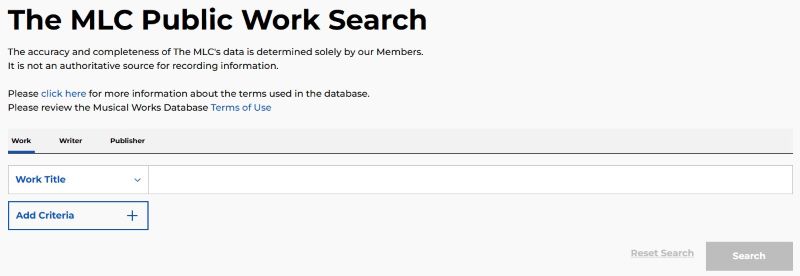
Most digital-music libraries include mechanical fees in a single certificate, sparing podcasters or app developers from piecemeal paperwork. Always read the fine print: some licences cover interactive streaming but exclude permanent downloads, which could leave audiobooks or offline-first apps exposed.
Public-Performance Right (live or broadcast playbacks)
The moment music reaches the public over the radio, in a livestream, at a café, or during a webinar, you enter public-performance territory. Broadcasters, venues, and streaming platforms maintain blanket deals with PROs such as ASCAP, BMI, PRS, or SACEM to keep daily programming legal.
If you rely on a platform that already holds a blanket licence, the performance royalty is handled for you. But host your own event or run music through a self-managed server, and you must secure the proper venue or online licence directly from the relevant PRO before the show goes live.
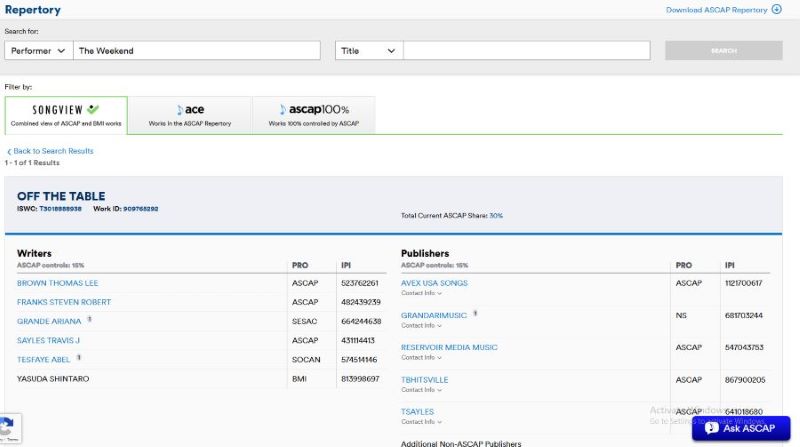
Master-Use Right (specific recording)
Even after you license the composition, using the original recorded version demands a master-use agreement from whoever owns that recording. For commercial releases, it’s usually a major or indie label; for self-published tracks, it may be the artist.
Locate the rights-holder via the ISRC code, liner notes, or label contact portals. If you opt for library music, the catalogue owner provides the master licence alongside the sync. Without this document, you can cover the song, but not the famous recording your audience expects to hear.

Line up each of these permissions – publisher, label, PRO, or library- before you release your project, and you’ll avoid takedowns, mutes, and late-night legal scrambles.
Licensing Models
Music licensing runs on four different pricing models – royalty-free, rights-managed, blanket, and custom. Each model fits different types of users and projects. When creators don’t know which model applies, they can overpay, under-license, or run into claims.
Royalty-Free Libraries
Royalty-free music means you pay once and can use the track forever within the terms. It works best when you need predictable pricing and broad usage rights.
Don’t confuse “royalty-free” with “free.” You still pay upfront, either per track or via subscription. The difference is you avoid paying royalties based on views, plays, or geography. The license is typically global and perpetual.
Subscriptions offer bulk access for frequent users.
Rights-Managed Catalogues
Rights-managed music charges you based on where, how, and for how long you use it. You might pay more for a national TV ad than a local video ad, even with the same track.
These licenses require you to define the scope: territories, platforms, audience size, and duration. You pay for a specific use case, not unlimited use. This model suits campaigns with limited reach but high production value.
Some modern platforms automate this process with dropdown menus and instant pricing. Others still require custom quotes, especially for film, broadcast, or theatrical releases where more variables are at play.
Blanket & Collective Licences
Blanket licenses cover a wide range of music for a flat fee. They’re commonly used by broadcasters, venues, and streamers that need access to thousands of tracks at once.
These deals come from PROs like ASCAP, BMI, or PRS and apply to public performance, not sync. A radio station or retail store can play music under a blanket agreement without clearing each track individually.
However, blanket licenses do not usually cover visual media like ads or trailers. If you’re syncing music to visuals, you’ll need additional sync rights, even if a blanket deal is already in place.
Direct Deals & Custom Quotes
When you want a famous track or need unusual permissions (theme parks, VR apps, brand anthems), you negotiate directly with publishers and labels. These deals are custom, complex, and often costly.
They may include one-time fees, backend royalties, or platform-specific limits. If you’re commissioning a remix or editing lyrics, those terms must be spelled out clearly and signed before use.
One missing clause can kill a campaign. We’ve seen it happen.
Pricing
Royalty-free plans stay predictable: single-track licences usually run $15 – $299, while unlimited-download subscriptions hover $9 – $60 per month. Pay once, obey the library’s limits, and you’ll never owe usage reports or backend royalties.
Blanket or collective deals cover huge catalogues for public performance only. A small café might pay a PRO about $250 a year; a midsize streaming app faces $2 k – $15 k, and a nationwide broadcaster budgets $75k – $150k annually.
Rights-managed quotes flex with scope. Expect $250 – $1.5k for a regional TV spot, $5k – $15k for a national, multi-platform campaign, and $20k – $75k when you need worldwide, perpetual theatrical rights.
Custom or direct deals jump fastest: brand anthems land around $5 k – $25 k; a chart hit in a global ad starts near $50k and can top $500k, sometimes plus 0.5 – 2 % of paid media spend.
Check your project’s estimated cost with our licensing cost estimator.
Music Licensing Cost Estimator
More inputs → tighter estimate. Guidance only, not a quote.
Estimated Licensing Ranges
Embed This Tool on Your Website

How Licensing Changes by Medium
Different creators trigger different rights. See how sync, mechanical and performance shift as music moves from YouTube to film to classroom use today
YouTubers
When you upload a video to YouTube with music, you trigger multiple rights. Sync rights cover the music–video pairing, and mechanical rights cover the on-demand stream. YouTube’s Content ID scans every upload for matching audio and checks for proper licensing.
Some creators pay for a track but overlook the need to register their channel for clearance. Even with a valid license, the library’s rights might not automatically clear in YouTube’s system. That can lead to copyright claims, blocked monetization, or frozen revenue while you dispute the issue.

To avoid this, use a music library that provides a license ID you can enter in YouTube Studio. Save the license certificate and track usage across your videos to avoid confusion or duplicate payments later.
Vloggers
Vloggers shoot daily moments, edit highlights, and upload across multiple platforms – YouTube, Reels, TikTok, and more. The YouTube version locks music to visuals, but each extra post may trigger new rights, especially for performance or mechanical use.
When speed matters, creators often reuse the same track without checking the license terms. A license that works for YouTube might block boosted Instagram posts, paid TikTok ads, or Spotify podcast trailers. That’s when music gets muted or late fees arrive.
Stay organized. Keep a simple log of each episode, which tracks it used, and where it was published. Ask your music provider for a bundle that includes short-form video, podcasting, and social ads, and save every license next to your final file.
Podcasters
Podcasts live in the audio realm, so music use triggers different rights than video. You need mechanical rights for downloads and performance rights for streams. Sync rights only matter if you publish a video version alongside the audio.

Some podcasters assume that using a short intro loop falls under fair use. That’s a myth. Even five seconds of music in an episode creates a digital copy and requires proper licensing. Skipping this step can lead to takedowns from automated music detection tools.
Always use a library that clearly allows podcast use and includes both mechanical and performance rights. Save each license with your final audio files, and add a brief rights notice in the episode show notes for future reference.
Marketers & Advertisers
Marketing campaigns use music to drive emotion and attention, especially in video ads. That use triggers sync and master-use rights first. Once the ad plays on TV, radio, or in-store screens, public-performance rights apply as well.
Agencies often buy digital-use licenses but later repurpose the ad for television or retail displays. Without revisiting the terms, they unknowingly step outside the license. This mistake can lead to infringement claims that cost far more than the original ad spend.
To stay safe, request an all-media license from the start. List where the ad will appear, how long it will run, and whether it includes social boosts or influencer use. Always file cue sheets so PROs properly register airings and clear your campaign’s music usage.
Livestreamers
When you play music during a livestream, you trigger public-performance rights the moment your audience hears it. But once the stream is saved as a replay or highlight, sync and mechanical rights apply too.
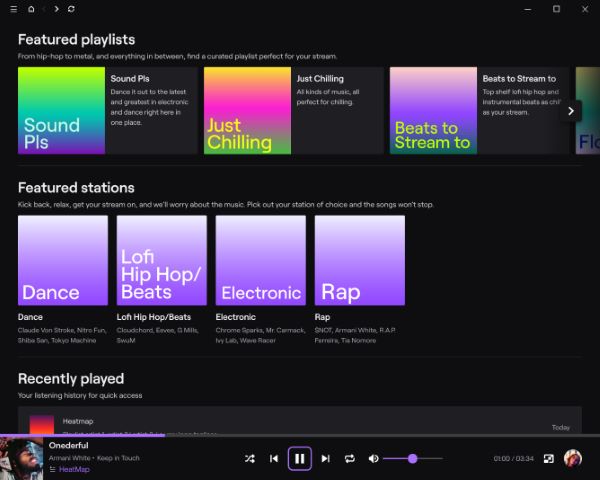
Twitch’s Soundtrack tool lets you use music during live broadcasts, but it doesn’t cover archived videos. Creators often discover this only after their best clips get muted, costing them views, revenue, and long-term audience engagement.
To avoid this, use music that includes video-on-demand rights. Swap out live tracks with licensed versions before saving replays, and add a note about the license in your stream description. Keep your certificates on file in case a platform demands proof during a content audit or monetization review.
Educators & Course Creators
E-learning videos combine lectures and slides with background tracks, so sync rights apply. If students can download lessons or watch in an app, you also need mechanical rights because each file becomes a discrete copy.
Teachers sometimes rely on classroom exemptions, unaware that public platforms nullify those protections. Once a paid course appears on Udemy, fair-use arguments collapse, and rights-holders can seek damages proportional to enrolment revenue and royalties lost.
Choose an education-tier licence that bundles sync and mechanical coverage and caps pricing by student headcount. Host music files inside the video rather than as separate downloads, and save certificates with each module’s production folder.
Film
In film, music becomes permanently tied to the visuals. You must secure sync and master-use rights for every piece used. A theatrical screening also counts as a public performance, often included in the original license deal.
Film festivals usually request global rights for at least one year. If your license only covers local use, you may need to rush last-minute upgrades before your premiere. Later, distributors demand perpetual rights across all territories, which can force contract amendments.
Hiring a music supervisor helps you catch gaps early. They negotiate usage, clarify geographic scope, and prepare cue-sheets for broadcasters. If your budget doesn’t allow it, use a trusted rights-managed library with licenses built for both theatrical and digital distribution.
Radio
Radio stations operate under blanket licenses with performing rights organizations, which cover the daily rotation of music. That means presenters don’t usually need to worry about individual track clearance for songs played during live shows.
Problems arise when outside advertisers submit promos that include music without sync licenses. Because those spots combine music with visuals, or scripted content, they require separate permission. A station airing such ads without proper clearance can face infringement claims.
To avoid this, always request sync documentation from advertisers before airing their content. Keep certificates filed alongside daily traffic logs. If paperwork is missing or uncertain, swap the music for a pre-cleared library track designed for broadcast use. That keeps the station safe without delaying campaigns.
Corporate
Corporate videos often stay behind login walls, but they still pair music with visuals, invoking sync rights. If staff download the video or presentation, that adds mechanical use, even if the audience is internal only.
Teams often assume their office’s background music license covers these uses. It doesn’t. Those licenses typically allow ambient playback in public areas, not synchronized use in training materials, onboarding videos, or corporate event openers.
To stay compliant, buy a corporate license bundle from a reputable music library. Look for terms that include closed audiences and internal use. Save all certificates in your compliance system, and mark the video credits with “Music licensed via [Provider]” to show clear and traceable usage.
Broadcast TV & Cable
Television requires full music clearance before air. Producers must secure sync and master-use rights for every track. Broadcasters depend on that paperwork to confirm performance rights when collection societies audit playlists or logs.
If cue sheets aren’t filed, composers and publishers won’t get paid. Worse, missing or mismatched licenses can block foreign versions or delay entire episodes. Fixing music issues after broadcast often means costly edits and lost airtime.
To prevent problems, file cue sheets right after the final mix. Store license files in a central folder shared with legal and production teams. When possible, choose libraries made for broadcast – they provide bundled rights, global clearance, and metadata formatted for TV delivery systems.
Personal Use
If you create a video just for yourself, like a vacation montage stored on your hard drive, no license is required. Copyright law doesn’t apply to private use that stays offline and isn’t shared or published.
That changes the moment you upload the video, even if it’s unlisted or not monetized. Platforms like YouTube and Facebook still scan for music through automated systems. Without the right license, your video can be muted or flagged.
To avoid issues, purchase a personal-use license from a trusted stock music site. It’s a small, one-time fee that covers uploads for life. Keep the license PDF with your files and paste the license ID into the video description for extra protection.
General Social Media
Using music from TikTok Sounds or Instagram’s built-in libraries covers you for sync and performance, but only while your content stays on those platforms. Exporting the clip to YouTube, Facebook, or a website breaks that agreement.

Creators frequently promote posts after publishing, unaware that typical royalty-free licenses exclude paid advertising. Once a post is boosted, it shifts from organic content to an ad, which carries different licensing rules. Rights-holders can charge retroactively for improper use.

Look for licenses that clearly allow both organic and paid social media use. Track which songs you used, when, and where. If you plan to turn a social clip into an ad campaign, check the license again and upgrade if needed.
Audiobooks
Audiobooks combine narration and music, which makes sync rights necessary, even without visuals. Every download through platforms like Audible or Google Play counts as a mechanical copy, and those platforms request license proof during content submission.

Most audiobook platforms limit how much music you can include. Audible, for example, may reject files with more than five minutes of non-narrative audio unless you’ve secured special approval. Producers often learn this too late, triggering edits and delays.
Use music sparingly and only where it adds impact. Choose a license that specifically includes audiobooks and allows full distribution. Submit the license certificate with your metadata to avoid delivery issues, and keep everything organized for future re-recordings or platform rejections.
Money Flow and Who Gets Paid
When you license music, the upfront fee usually goes to the rights-holders – the publisher for the composition and the label for the recording. If you’re using a music library, they collect on behalf of those parties.
Even after you’ve paid for sync rights, performance royalties still apply. Every time your video, ad, or film airs publicly, performing rights organizations collect fees and send royalties to the original songwriters and publishers.
That means one track can earn money multiple times: first through licensing, then through broadcasts or streams. It’s why cue sheets and proper metadata are essential. They ensure the right people get paid and help avoid delays in release or disputes down the road.
The Practical Workflow
Start by defining exactly how you plan to use the music. That means naming the medium, video, podcast, ad, game, along with the territory, audience size, time span, and whether the use will be exclusive or shared with others.
Next, choose the track. You might browse a royalty-free library, request music from a label, or license something directly from an independent artist. The source affects how easy the next steps will be and what rights you’ll need to secure.
Every track has two copyrights: the composition and the recording. You’ll need to license both. Sometimes they come bundled, but often you’ll need two separate agreements – one from the publisher and one from the label or artist.
Get the agreement in writing. Using a download-based library or negotiating directly both require a license certificate or a signed contract. If the project will air publicly, also prepare a cue sheet that lists music timing and ownership splits.
Store your paperwork where you can easily find it. Platforms may ask for license proof, especially if claims or audits arise. Cue-sheets and certificates help protect your content and your rights.
Don’t forget to check your ongoing obligations. Some licenses never expire. Others limit usage by date, platform, or geography. Read the terms closely and log reminders if renewals or usage reports are required later.
Define the Use-Case
Medium, territory, audience size, term, exclusivity
Pick the Track
From a library, a label, or the artist directly
Clear Both Copyrights
Library checkout, PRO, or direct negotiation (often two contracts)
Get It in Writing
Licence certificate or agreement, plus cue-sheet if public
Store Proof and Credit
Keep certificates, cue-sheets, invoices – platforms may ask
Track Ongoing Obligations
Some licences are perpetual, others expire or need reports
Instantly Pick the Right Licence with Music License Wizard
Still unsure which rights your next video, podcast, or ad will trigger? The Music License Wizard turns the rules you just read into a quick questionnaire, giving you a tailored license plan in under a minute.
Select your medium, audience, and platforms, then download a checklist and sample licence text you can file or send to clients. It removes guesswork, reduces claims, and keeps production running without late-night legal scrambles.
Music Licensing Cost Estimator
More inputs → tighter estimate. Guidance only, not a quote.
Estimated Licensing Ranges
Embed This Tool on Your Website


Audiodrome was created by professionals with deep roots in video marketing, product launches, and music production. After years of dealing with confusing licenses, inconsistent music quality, and copyright issues, we set out to build a platform that creators could actually trust.
Every piece of content we publish is based on real-world experience, industry insights, and a commitment to helping creators make smart, confident decisions about music licensing.




 The lesson stuck. We began checking every license for platform-specific terms, especially paid placement, social use, and channel authorization. Every certificate now lives in a central folder. If claims happen, we respond fast, with proof in hand.
The lesson stuck. We began checking every license for platform-specific terms, especially paid placement, social use, and channel authorization. Every certificate now lives in a central folder. If claims happen, we respond fast, with proof in hand.





